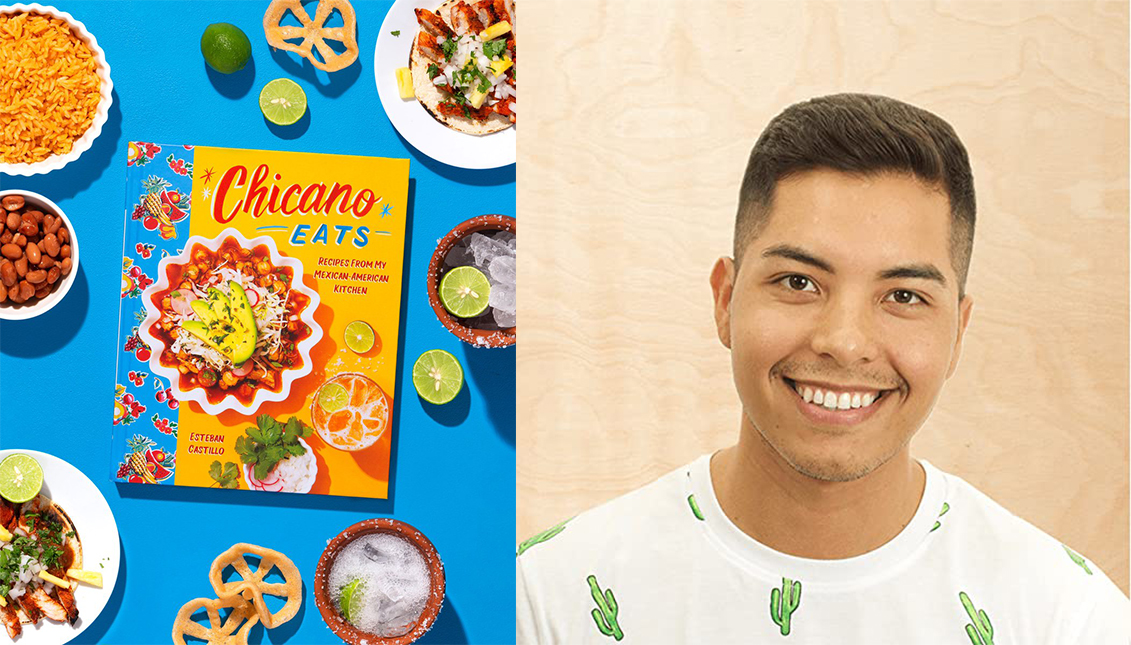
Tortillas and Roots: The Ultimate Book on Chicano Cooking
Esteban Castillo reinvents his family's traditional dishes in a culinary journey through identity in Chicano Eats: Recipes from My Mexican-American Kitchen.
When Mexico's Esteban Castillo started his successful Chicano Eats blog in 2016, he did so largely out of nostalgia for moving from Santa Ana to university, in Humboldt. Soon, his culinary odyssey led him to create something much bigger than an online recipe library, but an archive of Chicano identity and personal stories through dishes.
Now Chicano Eats has jumped from the cybersphere into the real world — whatever that is — and can be read in book format under the title Chicano Eats: Recipes from My Mexican-American Kitchen.
In the book, Castillo not only leads us through his family's traditional recipes from distant days when his grandparents were street vendors in Colima, Mexico, and later orally passed recipes on to him. He also seasons them with his own experience as a Californian, reinventing the tacos adobadas, tacos tuxpeños — his mom's favorite — or beans to taste in what has given rise to a true culinary mestizo.
For example, Castillo told the LA Times, the Lucas Gusano's sweets he couldn't find in Humboldt were transformed into tamarind chicken wings, and margaritas were made out of spicy watermelon, very much in the style of a "true Orange County housewife."
"Whenever I looked for recipes, I realized that people always turned to white people for our stories and recipes. And it didn't seem fair. Why can't I do this? Not seeing anyone else like me in that landscape pushed me to collect all these recipes. If I felt that way, I don't know how many people out there are also missing or trying to figure out their mother's recipe," explained the blogger and now author to the LA Times about his motivations for building Chicano Eats.
Castillo admitted the 2016 election was a turning point in his life and his view of his own culture.
"A lot of people came up to me, who were first or second generation Chicanos, saying, 'I never grew up with my culture because my parents really assimilated me into this country and stripped me of parts of the culture. Their blog has helped me a lot," he said.
His Chicano identity is not only represented in the book's recipes, such as the Mosaic Jelly or the three horchatas, but also in the language he uses, and even in his choice of publisher.
"If I'm with my brothers or my cousin, I'm going to use Spanglish. That's what I am. When I met with the different publishers who were interested in acquiring the book, one of the things I looked for in a publisher was to work with someone who was a person of color or Latino. Of the many publishers I knew, there was only one that had a cookbook publisher who was Latino and who was with HarperCollins. Everyone else was essentially white," said Castillo, whose parents had been undocumented in the United States.
"When I went to Mexico, it was either on my own or with an aunt or uncle. I never really felt like I belonged there because I spoke English. So I was here on the playground trying to speak Spanish with my friends but also hearing that we weren't supposed to. (...) The Chicano term really helped me to accept that. I'm not from here or there, but from both at the same time," he said.
The best thing about the book? The fusion of cultural history and gastronomy, the praise of the roots and, of course, the unparalleled recipes for michelada stewed ribs. A delight!











LEAVE A COMMENT: